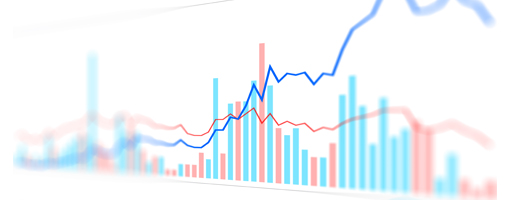Total global pension assets rose to a record high of USD 58.5trn in 2024, driven by growth in the largest defined contribution (DC) markets, analysis from the Thinking Ahead Institute (TAI) has revealed.
The latest Global Pension Assets Study revealed a 4.9 per cent increase in total pension assets, rising from USD 55.7trn at the end of 2023 to USD 58.5trn at the end of 2024.
This was driven primarily by growth in the largest DC pension markets, as the survey found that, when looking specifically at the largest seven pension markets globally (P7), DC assets now accounts for 59 per cent of total assets compared to just 40 per cent in 2004.
This shift was attributed to DC schemes’ higher exposure to growth assets, which has seen DC assets grow by 6.7 per cent pa since 2014, while defined benefit (DB) assets grew at a slower pace of 2.1 per cent pa.
However, the survey revealed "significant" regional differences, with the UK in particular recording the slowest growth over the past 10 years, despite remaining in the top four largest pension markets.
According to the study, the US remained the biggest pensions market by far with a "significant" 65 per cent share of global pension assets,
When combined with the next three largest pension markets – Japan, Canada, and the UK – these four regions equate to 82 per cent of all global pension assets.
But there could be changes in the rankings in future, as the TAI noted that while there has been relatively little change in the make up of the P7 over the past 20 years, the growth in some regions, primarily those with larger DC markets, is far outstripping others.
Indeed, since 2014, the size of Australian pension assets has grown by 110 per cent in local currency and in the US it has grown by 75 per cent.
Both markets have a substantial skew towards DC pension funds, with 89 per cent of Australian assets in DC and 69 per cent of US assets in DC schemes.
The TAI pointed out that the Australian market in particular has experienced "phenomenal growth", with the size of assets having increased by nearly 500 per cent over the last 20 years.
Assuming its current growth trajectory is maintained, this means that Australia could become the second largest pension market globally by 2030.
In contrast, the UK was the only country in the study to exhibit negative annual growth over the past year, at -0.7 per cent, when assessing growth rates in local currency in the major pension markets.
This decline was consistent with long term data, as the UK has recorded the slowest growth among P7 countries over the past 10 years, with its global share of pension assets declining from 8.8 per cent of the largest 22 markets in 2014 to 5.4 per cent in 2024.
This may be due to the make up of the pensions landscape in the UK, as the TAI noted that, in the previous year, just over a quarter (27 per cent) of UK assets were formed of DC pensions, whereas an "overwhelming" three-quarters were formed of DB pensions.
The TAI also noted that, of the top 7 pension markets, the UK allocated the largest proportion to bonds at 56 per cent, closely followed by Japan at 55 per cent.
Commenting on the findings, TAI director, Jessica Gao, said: “The rise of DC becomes more pronounced every year that we conduct this study. While global pension assets continue to Media release reach new record levels, it is those markets with larger pools of DC assets that are the main engine behind this continued growth.
"As the size of these asset pools continues to increase, we are seeing increased influence by governments towards pension funds, primarily through regulation, which has expanded in line with both the size and growing significance of pensions in society. This has been particularly evident in countries such as Canada, Australia, and the UK.
“A key trend that we have observed over the last few decades is the rotation from equities into alternative assets, as pension schemes have turned to private equity, property, and hedge funds, to diversify their portfolios and boost returns.
"The understanding of these specialist asset classes has also deepened considerably. In the past, alternatives were grouped into a single category, but we now see a more granular approach being taken to these investments, with asset owners making distinct allocations of capital to the different asset classes such as private debt, commodities, liquid alternatives and infrastructure.”
Latest News
-
Political consensus set to be key challenge for Pensions Commission
-
De-risking remains dominant theme for DB despite growing interest in run-on
-
DB schemes warned against ‘tick-box’ climate transition plans amid investment risk concerns
-
DB schemes at crossroads as surplus distribution and data challenges dominate strategy
-
TfL Pension Fund raises ESG allocation to 15.9% after exceeding net-zero target
-
Pension discussions with family and friends remain rare
Private markets – a growing presence within UK DC
Laura Blows discusses the role of private market investment within DC schemes with Aviva Director of Investments, Maiyuresh Rajah
The DB pension landscape
Pensions Age speaks to BlackRock managing director and head of its DB relationship management team, Andrew Reid, about the DB pensions landscape
Podcast: From pension pot to flexible income for life

Podcast: Who matters most in pensions?

In the latest Pensions Age podcast, Francesca Fabrizi speaks to Capita Pension Solutions global practice leader & chief revenue officer, Stuart Heatley, about who matters most in pensions and how to best meet their needs
© 2019 Perspective Publishing Privacy & Cookies











Recent Stories